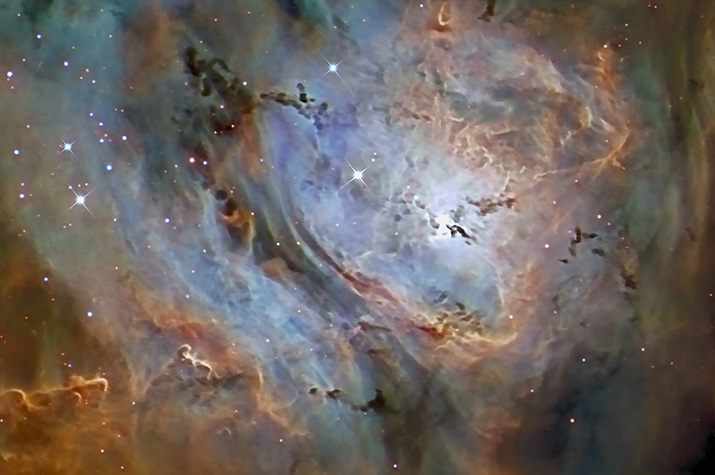
|
Date: July 13-14-15-16-17, 2015 - Location: Denton, Texas Telescope: ATRC12 - Camera: ST-10XME - Mount: MI-250 Guided using Innovations Foresight On Axis Guider (ONAG) Exposure: SII = 270 min. HA = 150 min. OIII= 240 min. - R,G,&B (Stars) = 20 min. each Click on the image to view at higher resolution. |

|
Messier 8 (M8) is commonly known as the Lagoon Nebula. Since the nebula is visible under very dark skies, it must have been observed in antiquity; however, it was first historically noted by Sicilian astronomer Giovanni Battista Hodierna in 1654. M8 is located in the constellation Sagittarius and lies approximately 5,200 light-years from the Earth. The nebula is a very large “stellar nursery” and covers an area greater than the full Moon. The image above is of the central portion of the nebula. I refer to this as the “Heart of the Lagoon”. The bright object just to the right of center is known as the “Hourglass Nebula”. It has been the object of study and research using the Hubble Space Telescope. Images from the Hubble reveal active stellar birth and accompanying Herbig-Haro features in the Hour Glass region. Numerous dark clouds, known as “Bok Globules”, are scattered through the Lagoon. These clouds are made of condensing gas and dust and are well on the way in forming new “protostars” and ultimately fully formed stars. The image above was assembled from data taken through emission line filters to produce a false color, narrowband, image. Sulfur II is mapped to Red, Hydrogen Alpha is mapped to Green, and Oxygen III is mapped to Blue. (Hubble Standard Palette) The Stars were overlaid with Red, Green, and Blue filtered data. 1http://messier.seds.org/m/m008.html
|